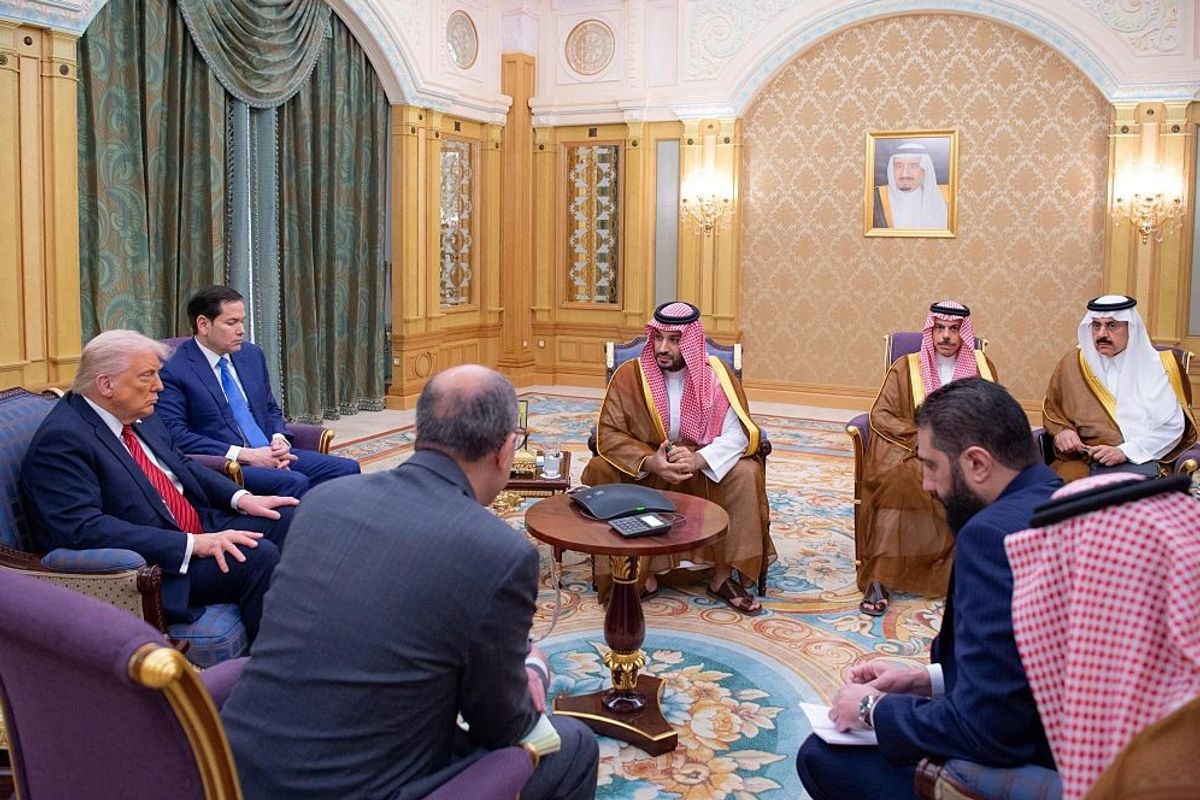It’s been a rough several months for the Islamic State in its quixotic effort to build a viable functioning nation-state. The Kurds and the Iraqi military keep slicing meaty territorial chunks from its flanks; the group is slashing its fighters’ salaries to make up for financial shortfalls; the U.S. continues its ruthless targeting of its leadership and infrastructure. President Obama recently told his national security team, “I want to make totally clear that there will be absolutely no cease-fire with respect to ISIL. We remain relentless in going after them.”
Given the Islamic State’s increasingly tenuous grip on major Iraqi urban centers—Ramadi fell in late December, the city of Hit is next on the chopping block, and there are plans to liberate the northern stronghold of Mosul—it might seem odd the group is devoting finite personnel and resources to striking outside the borders of both Iraq and Syria proper.
But the Islamic State has indeed been diverting resources for the larger cause. The group has proven remarkably successful in its efforts to spread its particular form of jihad; since last summer, the Islamic State has directed its operatives to murder innocents in Turkey, Lebanon, Indonesia, Tunisia, and France in terrorist attacks that have varied in both size and complexity. It also famously maintains a sophisticated social media apparatus that acts as a megaphone for its actions, even if the attacks themselves turn out to be duds.
Furthermore, spreading violence across continents is what sets the Islamic State in Syria and Iraq apart from most other terror groups—and even its own franchises. It seems only its Egyptian affiliate, by downing a Russian passenger jet last October, committed a terrorist attack of international implications, but even that was for a target within its general area of operations. Even ISIS’ most lethal franchise—Boko Haram in Nigeria—tends to keep its brutality generally geographically confined; the group blows up markets in Maiduguri but probably do not have plans to do the same in Miami or Minneapolis.
So, why is it only the killers from Iraq and Syria who remain particularly interested in pursuing an external attack strategy? This phenomenon is probably because committing terrorist operations abroad is embedded in the organization’s DNA. Recall the late Abu Musab al-Zarqawi, who founded the Islamic State’s predecessor group, al Qaeda in Iraq (AQI), wanted to exploit Iraq as a springboard for attacks across the Middle East and elsewhere. Until his death in June 2006, his group boldly struck throughout the region, most notably in Turkey, Lebanon, and Jordan. It was his group that carried off the November 2005 operation against three western hotels in Amman, the group’s most lethal strike outside Iraq until the 2015 Paris attacks.
In this respect, the Islamic State’s global ambitions are similar to their largest competitor for the worldwide jihad, al Qaeda. Since its first incarnation, al Qaeda always maintained a firm interest in pushing the boundaries of jihad beyond localized state borders, even if its franchises were not always interested in carrying out these demands. By directing operations to areas where the Islamic State does not operate in a significant way—Paris or Jakarta, for example—the group is placing a marker of its grandest goals. It is not for nothing that a young Australian Islamic State fighter, surrounded by his masked comrades, shot a video in late 2014 claiming the group will “put the black flag on top of Buckingham Palace…and the White House.”
Idle threats and bluster? Sure. But for such a group that believes in tight message discipline, it’s probably not beyond its wildest ambitions.
Islamic State’s external efforts places the United States in a bind; while America is obviously heavily engaged in the fight against the Islamic State, its current efforts to “degrade” the group will not necessarily “defeat” it. The grim reality is without significant ground forces to liberate Islamic State-controlled lands—and without providing capable governance in those areas in the months and years afterwards—the group will continue to both hatch and direct operations in relative safety.
Given the Islamic State’s audacious operation on the streets of a western European capital, it’s only a matter of time before it sets into motion a sophisticated operation to strike the U.S. And if the operation is large and lethal enough, America will be compelled to act much more forcefully in the Middle East, perhaps deploying significant ground troops to Iraq and Syria to destroy the organization.
Yet it’s ultimately up to the locals to keep the long-term peace. In 2011, when the U.S. pulled out its combat forces from Iraq, AQI was a shadow of its previous incarnation – its leaders dead or imprisoned, its cause in tatters. But the Iraqis were either unable or unwilling to finish the job. Given Baghdad’s sectarian impulses, the terror group was given breathing space that it used to recruit new followers and regain strength.
Given the Islamic State’s oft-stated desire to commit attacks outside of Iraq and Syria, it’s only a matter of time that the group will successfully carry out an attack on the U.S. homeland or on critical U.S. interests abroad. And when that happens, the U.S. will have little choice but to attempt to excise a malignant terrorist cancer with the full force of its military and intelligence services.
Again.













